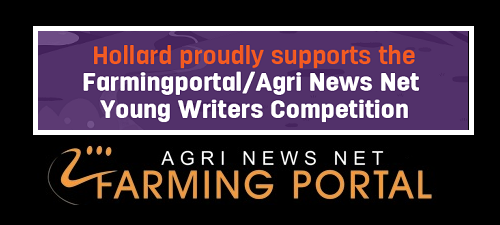Hollard Insure and Farmingportal.co.za and Agri News Net - Young Agri Writers competition - The winner-
We can plant on land, on gravel (soilless farming), your hydroponics and aquaponics, but the ocean; that is just extraordinary.
So what is it all about?
With the water crisis looming we need to conserve potable water. But an ocean garden does not need to be watered after all, so there are attractive aspects to this. We are also running out of arable land, so it all leads to one thought: we need a different approach to food security. I am using kelp as an example of all the ocean garden options, and there are many plants we can utilise (surprise!)
Underwater farming or the ocean garden is not new. However, it has been focused on growing high-value, niche crop. For instance, edible Kelp is a breath-taking organism. It may be considered to just be algae, but it gives ocean life a unique identity, and has become an icon of marine conservation.
The oldest kelp recipe known is for the Japanese “kombu”, which is made from Japanese local kelp species, most similar to South Africa’s split-fan kelp.
The demand of the ‘algae’ Kelp amongst consumers is not going to be a challenge. According to nutritionists, kelp is often considered a ‘super-food’ due to its significant mineral content of iodine (important for optimal thyroid function and metabolism).
Kelps, in terms of an ocean farm, is a crop that requires planting and harvesting, just like any other plant, but with very little work in between. Moreover, it needs no fertilizing, no weed control, no watering, and it has very few ‘enemies’ in the form of pests or disease.
However, ‘planting’ is quite an unmerited term for the production of kelps. Kelps can disappear and reappear based on the oceanographic conditions and the population sizes of their primary herbivores.
Warmer than normal summers and seasonal changes to currents that bring fewer nutrients to kelp forests (both sometimes occurring naturally) combine to weaken kelps and threaten their survival.
Then destructive fishing practices, coastal pollution, and accidental damage caused by boat entanglement are known to negatively affect kelp forests. Area based management (e.g., designation of marine protected areas) is known to be an effective way to protect kelp forests from excessive use or harm by people.
However, like familiar plants, kelps require sunlight to photosynthesise and convert carbon dioxide into sugars. Unlike ‘plants’, however, kelp does not use roots to extract nutrients from the soil - kelp can extract the needed nutrients directly from the water around it. So, instead of a “ root system”; it has a modified anchoring system known as a holdfast.
Kelp can be harvested in various ways, depending on what part of the plant is required. The effect on the kelp plant and on the environment depends on how the plant is cut. The main distinction to be made is whether or not the plant is killed by harvesting. If it is killed by harvesting, we call it‘whole-plant harvesting’, but if only some of the frond material is cut, and the plant is left alive, we call it ‘frond-only harvesting’.
On the other hand, concerns about the ocean garden include whether a set-up like this would disrupt the local food infrastructure. Coastal communities often rely on fish not just as food for the family but as a source of income (selling the catch).
One way to mitigate the concern is if the ocean farm respects local customs and is mindful of the condition of the ocean. One thing is clear; we can grow plants underwater. We can get away from the water crisis and find a new way of ensuring food security.

I am Masiziba Ruth Hadebe, an MSc Candidate (Agricultural Economics) from the University of the Free State (UFS). I was born and bred in a small town called Balfour in Mpumalanga. I am an avid reader and writer of anything science, particularly agriculture. In fact, I have been writing from the age of 16 for a high school magazine. I am also community driven as I participate in numerous community projects that empower my community.














